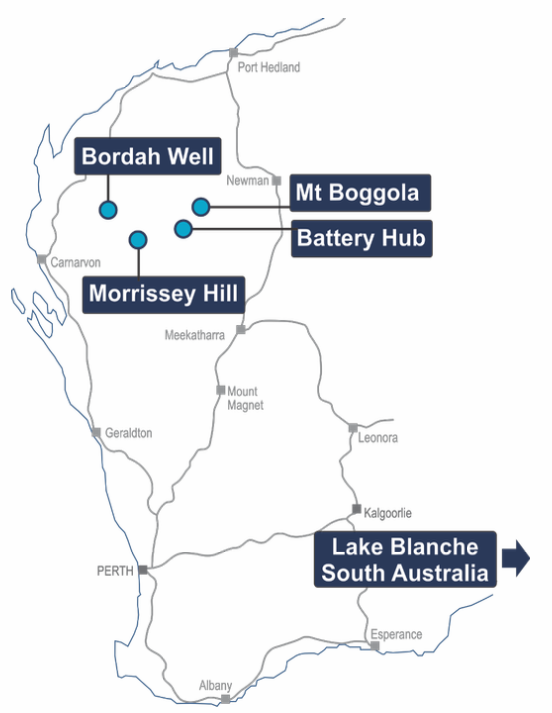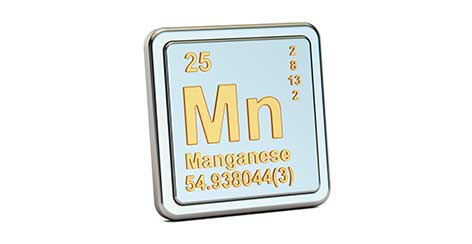Manganese minnow Pure Minerals hopes to ride wave of demand
Mining
Mining
While high-tech metals lithium and cobalt have grabbed recent attention, manganese has received little fanfare despite its essential role in rechargeable batteries and steel manufacturing.
However, with the recent uptick in price on back of higher demand and expected supply-shortfall, it looks like that’s about to change.
Manganese (periodic name Mn) is a chemical element normally found in combination with iron. Like market darlings lithium and cobalt, manganese is used to produce rechargeable batteries used to power electric vehicles and other devices.
One cashed-up ASX-listed junior hoping to ride a wave of manganese demand is Pure Minerals (ASX:PM1).
Pure re-listed earlier this month after buying its flagship manganese Battery Hub project in the Gascoyne region of Western Australia.
Formally known as Eagle Nickel, Pure was reinstated to official quotation from the start of trading on August 4, following re-compliance with ASX listing rules.
It is cashed-up, having successfully raised $4.5 million to begin exploration activities on a suite of projects located in the Gascoyne region.

Location of Pure Minerals’ projects. Source: Pure Minerals
The jewel in the crown, as far as Pure is concerned, is the wholly-owned Battery Hub manganese project.
The project is a 50km mineralised trend of 68 near-surface manganese prospects with surface samples and drilling reports of grades of greater than 40 per cent manganese.
Pure expects to be granted the Battery Hub tenements later this month.
Prior to this, the company is undertaking a review of the historic drilling, mapping and surface sampling data to help identify high-priority drill targets and develop a plan.
Once tenements are granted, Pure plans to begin drilling and hopes to advance Battery Hub to a maiden resource estimate with metallurgical testing to follow.
“The Company’s exploration properties are highly prospective for metals that we believe will be key components of the next generation of rechargeable batteries,” said Pure Minerals chairman Jeremy King.
“While manganese is primarily used as an additive in steel-making, an upgraded form of the commodity, electrolytic manganese dioxide, has emerged as a key material in the rechargeable battery technology developed for electric vehicles and off-grid energy storage.”
Pure also has acquired 80 per cent stake in the Morrisey Hill lithium-tantalum project and an 80 per cent stake in the Mt Boggola copper project.
At Morrissey Hill, Pure has begun detailed geological mapping, soil sampling and rock-chip sampling. Pure is also undertaking mapping and surface sampling at Mount Boggola.
Pure hopes to identify drill targets at both projects later this year.
The company boasts an impressive board with a wealth of experience. King has 15 years of experience as a corporate advisor while executive director Sean Keenan has 20 years in mining geology, mining equity research and investment banking.
Shares in Pure closed on Friday at 2.5c, valuing the company at around $5.4 million. With a strong cash position of $4.1 million, enterprise value comes in at $1.3 million.

What is manganese and why all the hoopla?
Unlike lithium and cobalt, which have gained in price on the back of the Electric Vehicle boom, manganese has not received quite the same interest.
Since early 2016, the price of manganese has grown 42 per cent. This is a respectable gain, but not in the same league as the 120 per cent and 77 per cent jumps cobalt and lithium respectively have experienced.
Besides its use in batteries, manganese is essential to steel production. It removes oxygen and sulphur when iron ore is converted into iron and acts as an alloy that increases the strength and flexibility of steel.
Palisade Research believes manganese demand for use in renewable batteries and steel manufacturing — particularly in the US which doesn’t produce manganese — means supply shortfalls are imminent.
South Africa is regarded as the biggest manganese producer with some 4.7 million tonnes in 2016, followed by China with 3 million tonnes and Australia with 2.5 million tonnes.
In Australia, the manganese sector recently received a boost with China’s Ningxia Tianyuan Manganese Industry Co earlier this month announcing its intention to bring the famous Woodie Woodie mine out of retirement at a cost of $30 million.